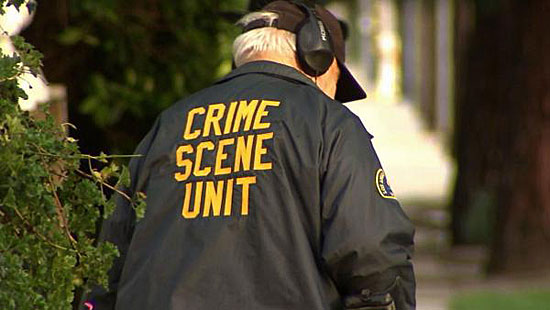“Realignment” realities

An investigator at the scene of the quadruple murders in Northridge.
For more than a year, I’ve made no secret of my concerns over the rushed and deeply flawed ways in which Sacramento saddled California’s counties with the duty of supervising tens of thousands of inmates being freed from state prisons. In all my years in public life, I’ve never seen a matter so crucial to public safety pursued with so little regard for on-the-ground realities.
This profound transformation of California’s criminal justice system, enacted under a bill called AB 109, erupted in the news this week in the most tragic of circumstances: the accused gunman in a quadruple homicide in Northridge was one of Los Angeles County’s new AB 109 charges. Exactly how the defendant, Ka Pasasouk, slipped through the cracks—and whether systemic breakdowns may have been to blame—remains under investigation. But already the case has exposed a painfully disturbing fact of “realignment.”
Under the law, only inmates serving sentences for non-violent, non-serious, non-sexual offenses are shifted to the county’s Probation Department for post-release supervision. State parole officers oversee the rest. But the truth is that upwards of half of these so-called N3s were previously incarcerated for serious crimes. Post-release supervision under the new law is based entirely on an inmate’s current conviction, not on those for which he may have served time in the past. Pasasouk was released from prison last January on a vehicle theft conviction. But he had a long history of older offenses, including robbery and assault.
The reason for Sacramento’s legislative sleight-of-hand comes down to this: expediency. The state was under a court order to slash its prison population by 30,000. Had earlier serious and/or violent convictions been thrown into the AB 109 mix, the state would have been unable to hit that number. I can’t help but wonder whether armed state parole agents would be better equipped than the county’s Probation Department to monitor this violent population, products of California’s penal system. I believe this is worth exploring as we move forward.
Of course, any criminal who’s determined to elude supervision will do so, whether he’s being watched by the state or the county. But there’s no question that California’s governor and legislature heightened the public risk by passing AB 109 before our local authorities had a handle on some of the most basic challenges, including how many of the inmates had serious mental health problems, violent histories or even places to live. To this day, more than a year after the law’s implementation, the Probation Department is struggling to keep pace with its mushrooming responsibilities.
Some probation officers have caseloads topping 200 individuals. Many of those ex-convicts, like Pasasouk, have been deemed “high risk.” Although probation officials say the caseload ratio should be closer to 50-to-1, we’ve been unable to hire and train probation officers fast enough to keep pace with the flow from the state’s 33 prisons. The Board of Supervisors has authorized the hiring of 393 probation officers, but so far only 170 have taken to the field, according to department executives. Meanwhile, just this week, probation took delivery of 35 new cars so its officers can make more home visits and compliance checks on “post-release supervised persons,” whose numbers have swelled to more than 11,000 in L.A. County.
This situation is so infuriating that it’s easy to get stuck on what we wish would have happened, rather than on facing and embracing the reality of our predicament. It’s important to remember that the ex-inmates for whom Los Angeles County is now responsible would have been cut loose no matter who was supervising them, and most would have returned to their previous counties of residence. This was not an early release program. While we can, and will, push Sacramento for some legislative fixes, AB 109 is not going away. So I’m hoping that some good might come of all this.
A wide array of county and municipal agencies across the region, extending beyond the Probation Department, have joined together under the hot lights of public scrutiny to tackle a job they know is crucial. Representatives of the departments of public and mental health, for example, are at the table when treatment plans are created for the AB 109 arrivals. Despite gaps that still must be filled, this intensive, multi-agency effort already exceeds the level of collaboration undertaken by state parole officials.
And that, at least, should be encouraging to a public that has a right to expect its government to keep them safe.
Posted 12/13/12






